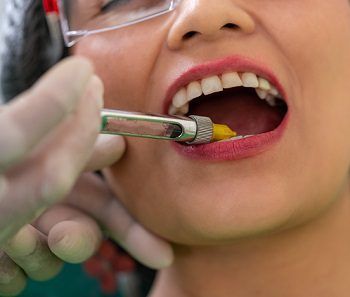Surgical orthodontics: how do people develop jawbone problems?
The jaw surgery aims to treat jawbone problems by aligning your top jaw (maxilla) and lower jaw (mandible). Your bite may suffer if your jaws are not aligned, making it challenging for you to speak and eat.
Orthognathic surgery, also known as jaw surgery, takes place over time. The process entails braces to prepare your teeth for jaw surgery, the operation itself, recovery time, and further braces for up to a year following the operation. The entire procedure of having a jaw operation can take two to three years.
How do people develop jaw problems?
Jawbone problems are typically congenital (existing at birth) or brought on later in life by trauma or other jaw-related illnesses.
Congenital jaw abnormalities might relate to a more general medical disease like Treacher Collins syndrome, or they can be specific issues like an overbite. Here are a few more examples of congenital jaw issues.

- Crossbite: It occurs when some of your bottom teeth protrude in front of your top teeth.
- Underbite: When your lower teeth protrude further than your upper teeth, you have an underbite.
- Open bite: When you close your mouth, several teeth do not come together in an open bite.
- Cleft palate and lip: When your face and mouth don't grow normally, you could have a cleft palate.
- Pierre Robin sequence: Infants born with the Pierre Robin sequence frequently have narrow lower jaws that might make breathing or eating challenging.
- Obstructive sleep apnea (OSA): OSA is a condition where your airway muscles, tonsils, tongue, or extra tissue obstruct it, causing your breathing to pause and resume while you sleep. The jaw procedure known as maxillomandibular advancement treats obstructive sleep apnea.
- Temporal mandibular joint (TMJ): An incorrect bite, which occurs when your upper and lower teeth don't line up, might lead to TMJ.
- Disturbances to growth: The jaw can change when your body produces excess growth hormone. Your tissues, mainly your upper and lower jaw, grow exceptionally large due to hormone overproduction.
Things you should consider before getting surgery.
You should be well aware of the potential outcomes of jaw surgery and the risks involved. You might be picturing a before-and-after photo of your face. If you do, show your medical professionals that picture. Tell them what you hope to achieve with jaw surgery. However, jaw issues vary from person to person. Your medical professionals will outline their suggestions for treating your particular problems and what to anticipate.

You should be well aware of the potential outcomes of jaw surgery and the risks involved. You might be picturing a before-and-after photo of your face. If you do, show your medical professionals that picture. Tell them what you hope to achieve with jaw surgery. However, jaw issues vary from person to person. Your medical professionals will outline their suggestions for treating your particular problems and what to anticipate.
However, jaw surgery is not a one-time procedure. It can take years to finish the process. Ask questions regarding the design as you explore jaw surgery, including pre-surgery orthodontia, recovery, and post-surgical orthodontia.
Types of Jaw Surgery
Your jaws may protrude too much or too little, which throws off the balance of your facial features. Jaw surgery can fix these issues. There are three types of Jaw surgeries:
- Maxillary osteotomy: This procedure is performed when your upper jaw protrudes too much or too little. A crossbite and an open bite are also treated with a maxillary osteotomy.
- Mandible osteotomy: This procedure is performed when your lower jaw protrudes too much or too little.
- Bilateral osteotomy is sometimes performed as double-jaw surgery if a condition affects both jaws.
What happens after the jaw surgery?
After your operation, you might need to stay in the hospital for one to four days so your doctors can check your health.
Here are some things you might go through while in the hospital and as you recover:
- Your dentist will place a plastic splint in your mouth during the procedure. You must wear your splint when you eat or brush your teeth. With the aid of the sling, your mouth muscles will become more accustomed to your new jaw position.
- Your face will likely be significantly swollen. You'll take medication to reduce swelling and sleep with your head elevated.
- Your doctor will prescribe drugs to treat your discomfort and prevent infections.
- For the first 24 hours, you must keep ice packs on your face, applying them for 20 minutes and then taking them off for 10 minutes.
- You will begin the liquid diet you will follow for the next few weeks.
- Your healthcare professional will remove the plastic splint about eight months after surgery.
- If you have, you will need to wear braces for six to nine months after surgery.
- After removing braces, you will require detachable retainers to keep your teeth in their new position. Your doctor will advise you on how frequently to wear your retainers, but most people do so consistently for an entire year. You should wear your retainers a few evenings per week after that.
What are the benefits and risks related to jaw surgery?
When your upper and lower jaws don't align, complications might arise. Jaw surgery can fix these difficulties. When orthodontic treatment hasn't solved your issue, jaw surgery may be possible.
Jaw surgery carries several risks, just like any major procedure. Common surgical complications include anesthetic risks, bleeding risks, and infection risks. The hazards associated with jaw surgery are different. The dangers consist of the following:
- Damaged to your teeth.
- Your bones do not heal properly.
- The trouble with your jaw joint.
- You are unable to expand your mouth as you would like fully.
- After surgery, your lower lip and cheeks remain numb.
- If your initial surgery didn't address your issues, you might require another surgery.
- The biting problem that led to your jaw surgery may recur.
- You may have wounds.
Although everyone's recovery is unique, most people spend several weeks at home before returning to work or school. While you heal, you can undertake some light exercises like short walks. Before including any activity in your daily routine, consult your healthcare practitioner. It takes time to heal. Your jaw may take a year to recover fully.
Conclusion
The most crucial step if you're considering jaw surgery is to be sure of your choice. Jaw surgery is a substantial procedure that can cause significant life disruption for weeks or months. You owe it to yourself to be aware of how having a jaw operation will change your life. You should also be mindful of what to anticipate from your jaw surgery. Discuss your alternatives and expectations with your healthcare providers. They will be happy to answer your questions because they know you are making a significant decision. Furthermore, they'll offer you enough time to decide whether jaw surgery suits you.
Contact your Danville dentist, Dr. Hoss Abar, DDS, MSD at Danville Orthodontics, to know how people develop jawbone problems.
Resource:
How Can You Benefit From Surgical Orthodontics?
This media/content or any other on this website does not prescribe, recommend, or prevent any treatment or procedure. Therefore, we highly recommend that you get the advice of a qualified dentist or other medical practitioners regarding your specific dental condition.
